Oklahoma’s humid subtropical climate and different geographic zones allow it to have a great variety of wildlife. Because of this, there are wild creatures that range from the most common to the rarest, from the familiar to the strange, from the beautiful to the homely. Here are some of Oklahoma’s wild animals and where they can be found:
The Official Animals of Oklahoma
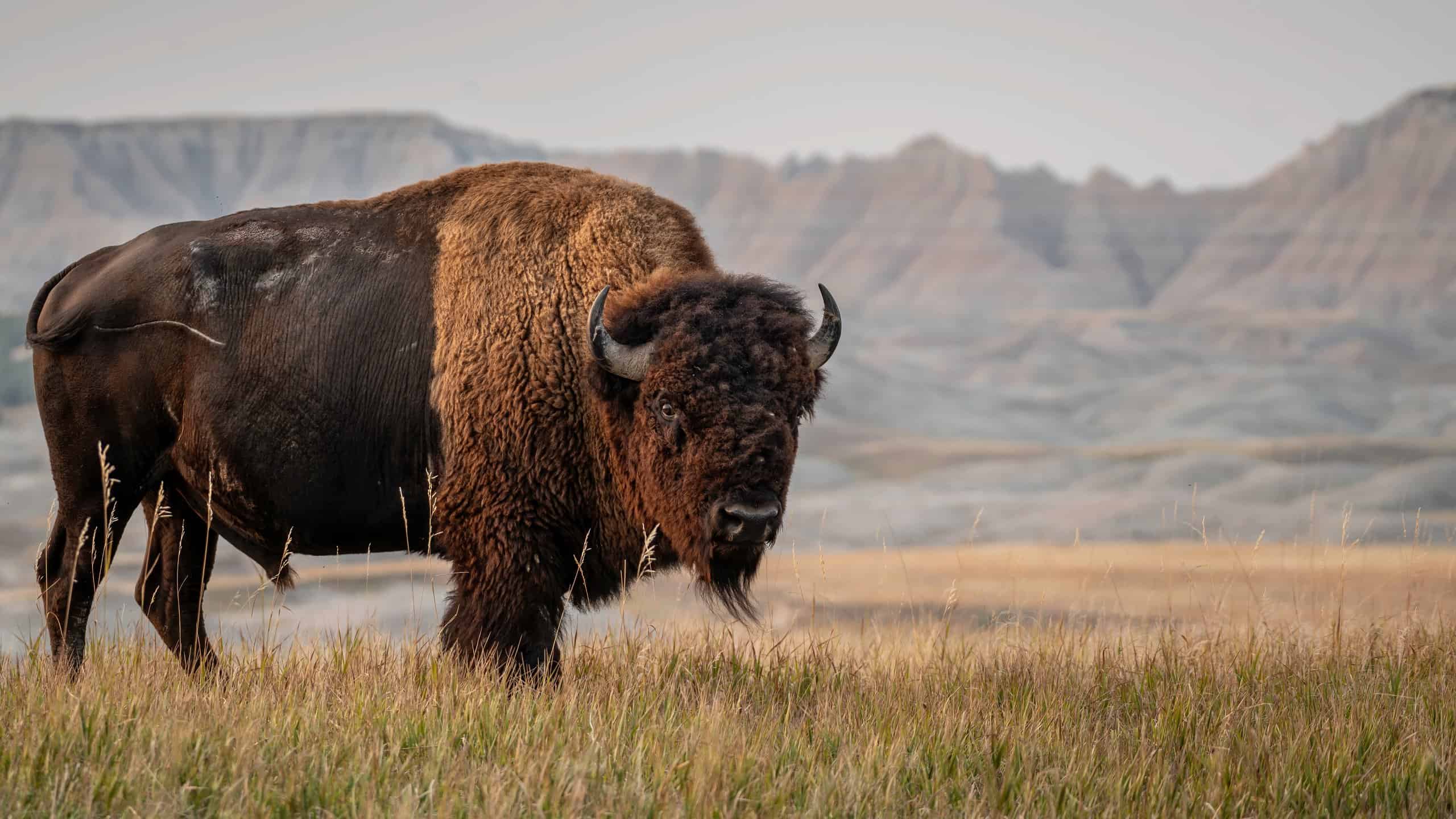
The American Bison is the official state mammal of Oklahoma.
©Tim Malek/Shutterstock.com
Official State Mammal: American Bison
The American bison, was nearly hunted into extinction in the 19th century, so this is an ironic choice.
Official State Game Animal: White-tailed Deer
This deer, which is so numerous that it’s considered a pest in some places, is a favorite of hunters.
Official State Bird: Scissor-tailed Flycatcher
This pretty, insectivorous bird is identified by its very long, forked tail.
Official State Raptor: Red-tailed Hawk
This bird is one of the most common hawks in North America and can be found in many habitats, from farms and forests to cities.
Official State Game Bird: Turkey
The wild turkey was once in the running to be the national bird of the United States. Like the white-tailed deer, it is a favorite of hunters.
Official State Flying Mammal: Mexican Free-tailed Bat
This fast-flying, high-flying little bat is one of the most common bats in the Americas. It can form colonies of tens of thousands of individuals.
Official State Reptile: Collared Lizard
This colorful lizard is named for the bands of black around its neck. Males are rainbow-colored.
Official State Amphibian: Bullfrog
The bullfrog is common in Oklahoma’s lakes, ponds, and swamps.
Official State Butterfly: Black Swallowtail
The males of this large, beautiful butterfly are mostly velvety black with blue, red, and yellow spots on the hind wings. The wings of the females are bluer.
Official State Insect: Honeybee
Known for its industriousness, this insect is a crucial pollinator of food crops.
Official State Fish: White Bass
A freshwater fishnative to North America, the white bass is a popular game fish found in lakes and rivers. This fish has a silver-white body with dark vertical stripes. It eats smaller fish, insects, and crustaceans.
Official State Amphibian: Bullfrog
The bullfrog is a semi-aquatic frog, primarily know for the loud call sounds it makes. They are the largest frogs that naturally exist in North America
Where To Find The Top Wild Animals in Oklahoma
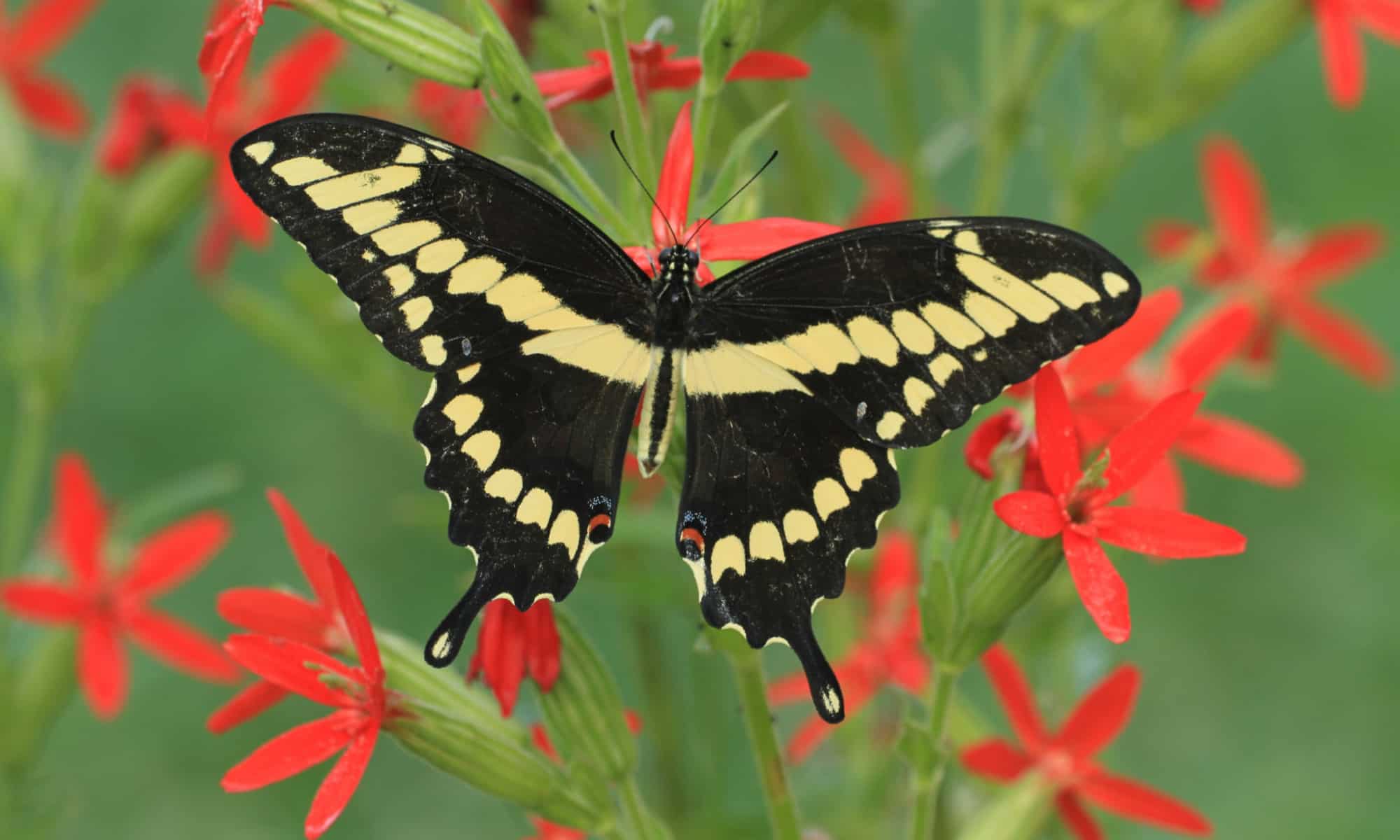
The giant swallow-tail butterfly can be found at the Tishomingo National Wildlife Refuge.
©Kevin Collison/Shutterstock.com
Though few animals are actually confined to Oklahoma’s wildlife and nature areas, they are the best places to see the larger creatures such as bison. Some of these places also allow hunting and fishing.
- Among them is the Tallgrass Prairie Preserve, where the visitor can see herds of bison.
- Twin Bridges is famous for its sport fishing, as is Beaver’s Bend State Park on Broken Bow Lake.
- Other wildlife areas are Chickasaw National Recreation Area in the Arbuckle Mountains and Gloss Mountain State Park.
- Waterfowl can be found at Deep Fork National Wildlife Refuge and the Martin Park Nature Center, which is right in Oklahoma City.
- Fish, amphibians and reptiles are right at home in the cool and moist microclimate of Natural Falls State Park.
- Other areas are Robbers Cave State Park and the Tishomingo National Wildlife Refuge, which is a stopover for migratory birds. The refuge is also home to many species of butterflies and moths such as the giant swallowtail, the fiery skipper and a strange looking moth called the abbreviated button slug. Since this park was set up to protect animals, hunting isn’t allowed but fishing is.
- Wichita Mountains Wildlife Refuge is one of the best places to camp in Oklahoma and it is likely that you’ll come across longhorn and Rocky Mountain elk as well as bison when you visit.
- Sequoyah National Wildlife Refuge was established on 20,800 acres on the western edge of Robert S. Kerr Reservoir in 1970. It is a waterfowl and migratory bird habitat that also provides food and cover for resident wildlife.
- Stinchcomb Wildlife Refuge in Yukon, Oklahoma, is a forested wildlife area for hiking, bird-watching, fishing, biking, and kayaking.
Visitors to these and other areas in the state can also find:
Insects
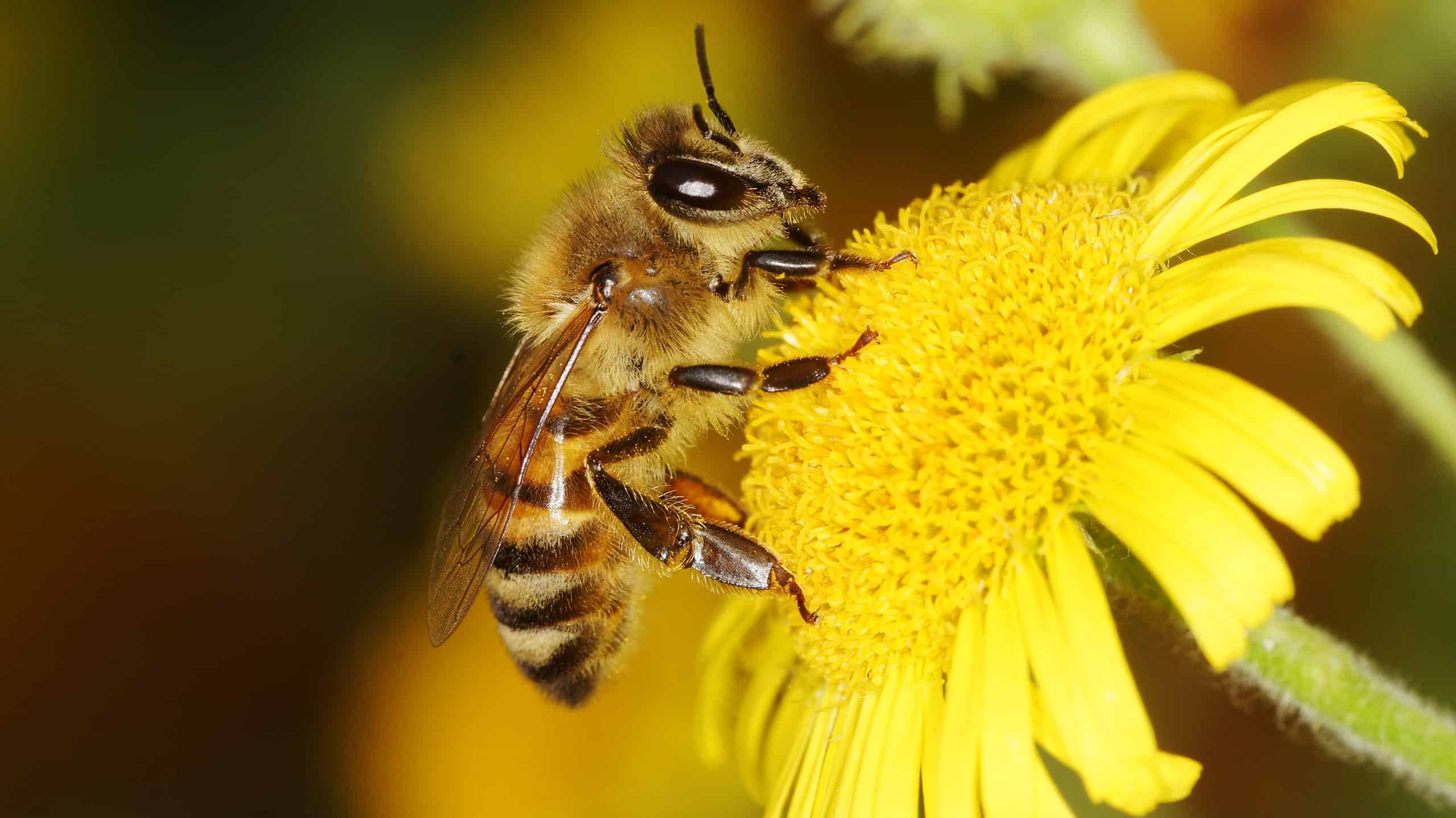
The Honeybee is the official state insect of Oklahoma.
©Maciej Olszewski/Shutterstock.com
Insects are of course the most common type of animal in Oklahoma as they are the most common animals just about everywhere. Besides its many varieties of butterflies and moths, the state is home to honeybees, which are the state insect, wasps, hornets, beetles, and true bugs. It also has cockroaches, cicadas and cicada killers, grasshoppers, katydids, dragon and damselflies, weevils, ants, termites, and fireflies.
Other Arthropods
Other arthropods include spiders, wolf spiders, black widows, brown recluse spiders, orb weavers, and cat-faced spiders, tarantulas, ticks, millipedes and centipedes, and the striped centroides scorpion. There are also crayfish, including the Delaware County Cave crayfish. This is one of the rarest crayfish as it’s only found in three caves in the aforementioned county.
Reptiles and Amphibians
Reptiles of Oklahoma include the common alligator. Alligators are actually native to Oklahoma but uncommon. They are mostly found in the Little and Red Rivers and their tributaries down in the state’s southeastern corner.
Other reptiles found in Oklahoma are skinks and other lizards, including the colorful collared lizard and the Texas horned lizard, a creature with a strange habit of spurting blood out of its eyes when it’s upset. The western slender glass lizard is legless and looks just like a snake but is not. You can tell because it has eyelids and earholes.
Turtles include the three-toed box turtle, the stinkpot, and the snapping turtle. Among the great variety of snakes are the speckled kingsnake, the western worm snake, the rough green snake, coachwhips, racers, milk snakes, garter snakes, and bull snakes. Oklahoma also has a good number of venomous snakes including the copperhead, the cottonmouth, and several species of rattlesnake.
Because they require lots of moisture, amphibians are mostly found in eastern Oklahoma. One of the rarest and most unusual is the three-toed amphiuma, which looks like an eel but is actually a 30-inch long nocturnal salamander. It appears legless at first but has legs that are so tiny that it can’t support the animal’s weight. Because of that, amphiuma is aquatic. Another strange amphibian is the siren, another eel-like nocturnal creature that spends the day in the muddy bottoms of torpid streams. More familiar amphibians include species of salamanders, toads, and frogs including the Kiamichi slimy salamander, the bird-voiced tree frog, and the Cajun chorus frog.
Fish
Oklahoma is a landlocked state, but it is known for the bounty found in its rivers and lakes. There are more than 177 types of fish in Oklahoma, and they include bass, shiners, chubs, gars, sturgeons, shads, minnows, buffalos, darters, madtoms, catfish, sunfish, perch, and trout. Both the rainbow trout and the brown trout were introduced and aren’t native to the state.
Bats
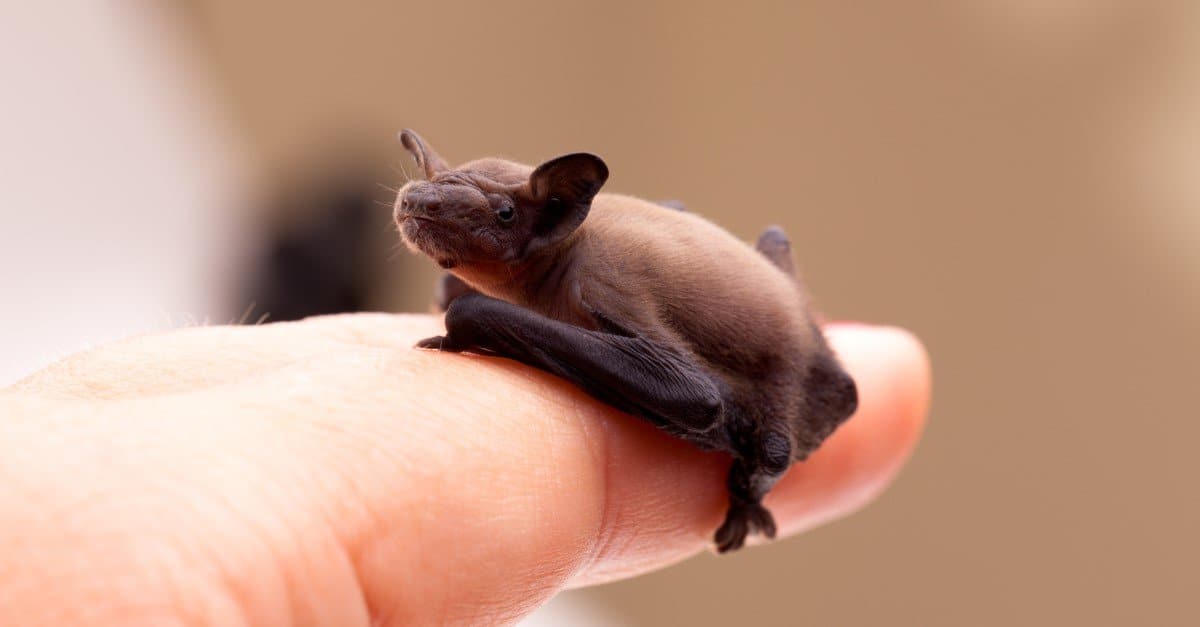
Cute baby Little Brown Bat sitting on a human hand to show it deserves “Little” in its name..
©Corina Daniela Obertas/Shutterstock.com
Examples of these mostly nocturnal animals, the only mammals capable of true flight, are the little brown bat, the hoary bat, the western and eastern pipistrelle, the Seminole bat, and the Yuma myotis.
Rodents
Some of the most common creatures in Oklahoma are rodents. Besides the ubiquitous house mouse, mice include the hispid pocket mouse, the plains pocket mouse, and the meadow jumping mouse. Other rodents are kangaroo rats, woodrats, brown rats, and black rats. Voles, squirrels, chipmunks, ground squirrels, prairie dogs, and groundhogs call Oklahoma home. Larger rodents are the North American beaver and the North American porcupine as well as gophers and nutria, and introduced large rodent that has become invasive in some areas. The marsupial Virginia opossum is also found in Oklahoma.
Small Mammals
Small mammals found in the refuge, parks, farms, pastures, and sometimes backyards of Oklahoma are rabbits including the eastern cottontail and the swamp rabbit. Others are armadillos, skunks, raccoons, weasels and ferrets, the American mink, and the American badger. The ringtail cat, a nocturnal cousin of the raccoon, can also be spotted in the canyons and other rocky areas of Oklahoma. There are several species of shrews and moles.
Large Mammals
Among the large mammals that live in Oklahoma are the American bison and the plains bison. Deer are the white-tailed deer, the mule deer, and the elk. Pronghorn antelope are found in the prairies of the panhandle, and hunters seek out the wild boar.
Birds
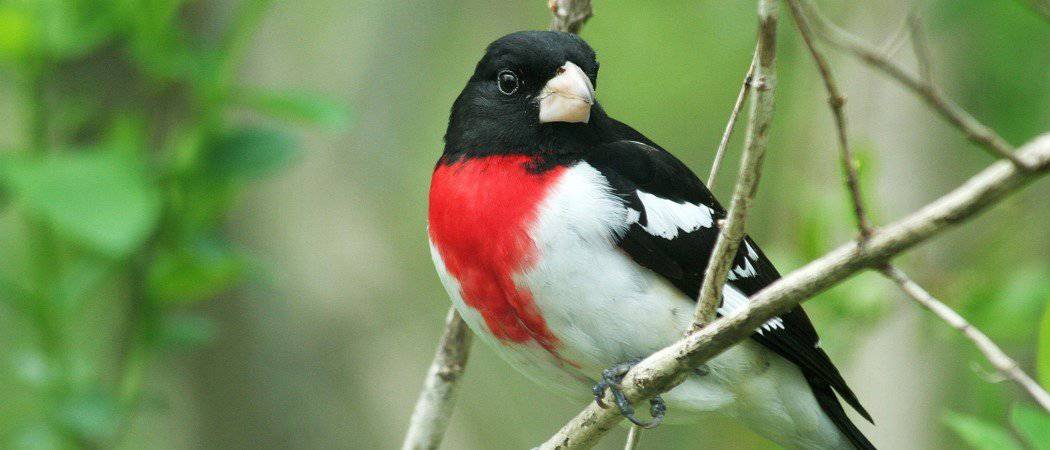
The Rose-breasted Grosbeak is an Oklahoma songbird.
©Jayne Gulbrand/Shutterstock.com
Many birds come to Oklahoma to spend the winter or to raise a family before they move on. Other birds are permanent residents. Many of these birds are waterfowl and include swans, geese, ducks, cranes, stilts, avocets, gallinules, pelicans, storks, and coots. Though sandpipers, curlews, godwits, and knots are considered shorebirds, the ranges of these birds include Oklahoma. Even seabirds such as gulls, terns, and skuas overwinter in Oklahoma. They can be found near lakes and rivers as well as trash dumps.
Songbirds of Oklahoma include the blue and rose-breasted grosbeak, buntings, cardinals, tanagers, and a cardinal relative called the pyrrhuloxia, whose female is blue instead of red. Other birds are warblers, wrens, starlings, orioles, blackbirds, crows, ravens, grackles, and meadowlarks, sparrows and juncos, finch, and thrushes, including the robin and all three species of bluebird. There are also waxwings, thrashers, nuthatches, hummingbirds and woodpeckers, swallows, jays, chickadees, shrikes, vireos, and flycatchers. Birds of prey include ospreys, eagles, kites, falcons, hawks, vultures, and owls.
Predators
Oklahoma does have its share of predators. Besides the birds of prey mentioned, there are the common alligator and other reptiles. The bobcat is the only largish cat left in Oklahoma after the extirpation of the cougar, as the coyote and the gray, red, and swift foxes have taken the place of the gray and Great Plains wolf. The former has been extirpated from Oklahoma while the latter is extinct. The American black bear is Oklahoma’s other large predator. Smaller predators include bats, amphibians, certain fish, and shrews. The armadillo preys mostly on insects but will eat other small animals if it must.
Zoos in Oklahoma
Those who don’t want to trek into the wilderness to see Oklahoma’s wild creatures can always visit its zoos, with its displays of beasts native and exotic. They include the Oklahoma City Zoo and Botanical Garden, the Tulsa Zoo, the Lost Creek Safari in Stillwater, the Greater Wynnewood Exotic Animal Park, and the Pawsitively Wild Animal Encounters and Education Center. Aquariums includethe Blue Zoo, the Oklahoma Aquarium, and the Medicine Park Aquarium and Natural Sciences Center
Wild Animals in Oklahoma
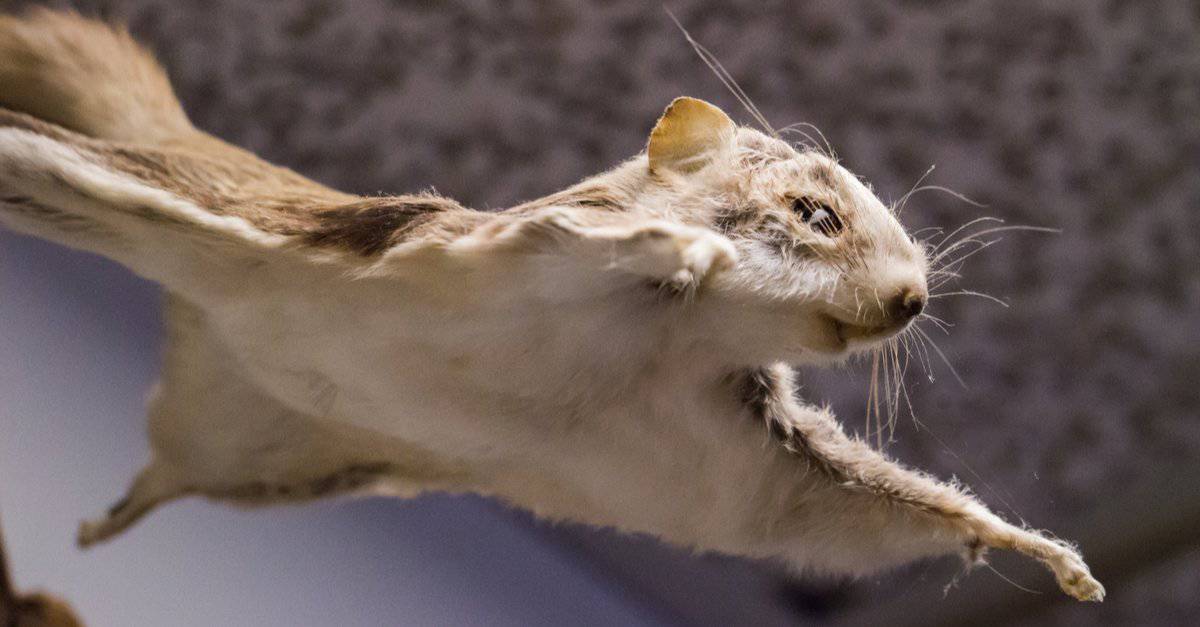
Though it technically glides rather than flies, the Flying Squirrel can adjust its speed and position.
©Laura Fiorillo/Shutterstock.com
Other wild animals to be found in Oklahoma are the eastern or common mole, a strange-looking little beast with naked outsized hands made for digging, tiny eyes, and a long, twitching snout. The southern flying squirrel doesn’t fly but glides from tree to tree due to a membrane attached to its four legs. The little stinkpot turtle gets its name because it has glands that release a nasty odor to put off predators.
The citrine forktail is a delicately beautiful damselfly. There’s a population of this insect in the Azores that reproduces through parthenogenesis. They’re the only members of the Odonata order that does this. The loggerhead shrike, another of Oklahoma’s predatory birds, is fond of killing prey by twisting its neck around then skewering it on barbed wire or thorns.
To read about the 47 different types of snakes in Oklahomas, click here. While the copperhead is listed below among the most dangerous animals, we could have also listed the prairie rattlesnake, the Western diamondback rattlesnake, the pygmy rattlesnake, or the Western cottonmouth (water moccasin).
The Most Dangerous Animals In Oklahoma Today
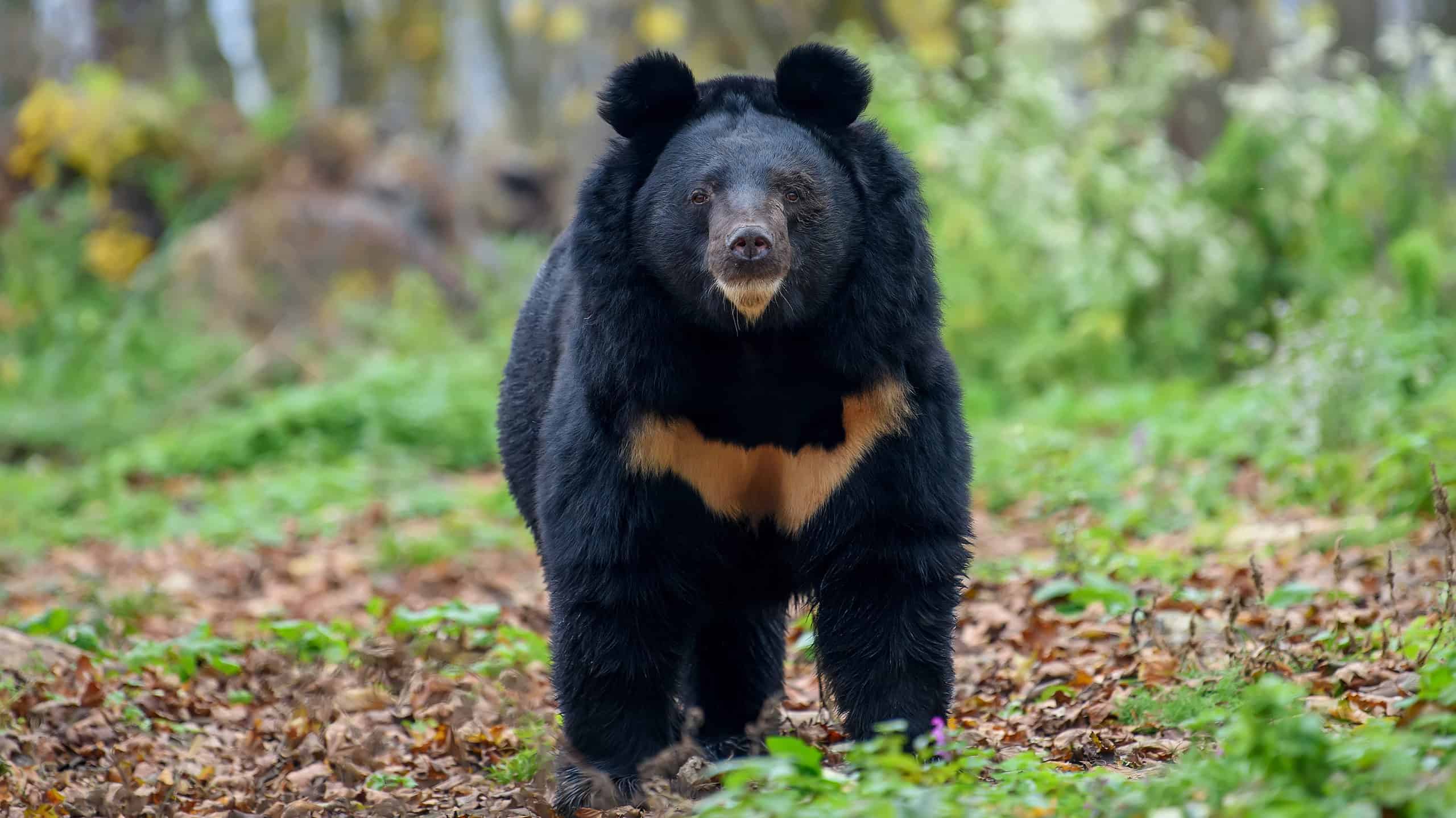
Black bears will attack humans. especially if it’s used to being fed by them.
©Volodymyr Burdiak/Shutterstock.com
Most of the truly dangerous animals, such as the grizzly bear, were extirpated from Oklahoma a while ago, so there are few animals that are really dangerous to humans. They are:
- Black bears. The American black bear has been known to attack humans, especially if it’s used to being fed by them. Mother bears are fiercely protective, and it’s a bad idea to come in between a mother bear and her cub.
- Copperhead snake. The problem with the copperhead is that it doesn’t warn you away with a rattle or a gaping mouth like the cottonmouth. It freezes, and since it has the same coloration as fallen leaves, it is too easy to step on it and get bitten.
- American bison. It’s best to watch this magnificent beast at a safe distance. Though not nearly as vicious as an African buffalo, it can charge for what seems like no reason, especially during the summer rut.
- Striped centroides scorpion. This is a little scorpion, so it is easy to overlook. It likes to hang out in cords of lumber and sometimes makes its way into the house, where people come into contact with it accidentally. Its venom is powerful and a person who is stung should seek a doctor’s attention.
- Mountain lion. A large, tan-colored cat species, the mountain lion (AKA puma, cougar, panther) lives in more geogrphies than any other Western Hemisphere mammal besides humans.
- Black widow sppider. Their reputations are fierce, but in reality, black widow spiders — aka Latrodectus — are calm, loner pacifists that only unleash venomous bites when they’ve exhausted all other defensive options.
Endangered Animals In Oklahoma
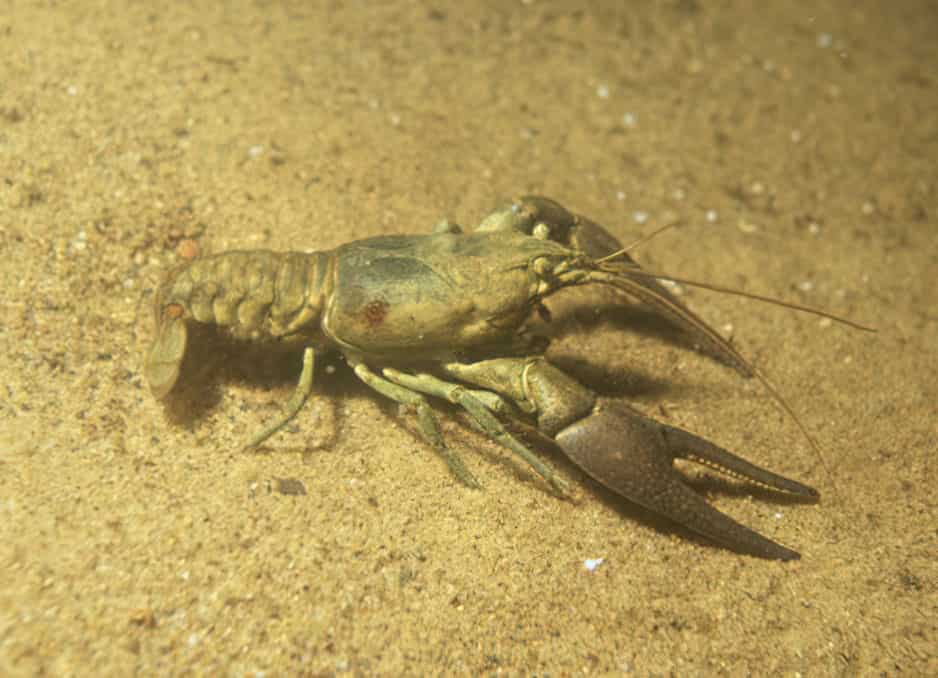
The nearly colorless cave crayfish is critically endangered .
©USFWS / public domain – License
A few of the endangered animals in Oklahoma are:
- Oklahoma cave crayfish. This crustacean, which is nearly colorless thanks to its cave habitat, is critically endangered. It presumably feed on roots, stems, and leaf fragments found within its range.
- Arkansas River shiner. Once abundant from Arkansas to Texas, this bright little fish is now only found in parts of the Canadian River, which passes through New Mexico, Texas, and Oklahoma. It is classified as vulnerable.
- Ozark big-eared bat. This bat with its enormous ears that connect to its forehead is now only found in a few caves in Oklahoma, Arkansas, and Missouri.
- Texas kangaroo rat. This little rodent is considered vulnerable, as its population is decreasing due to habitat destruction.
- Neosho mucket. Hstorically found throughout the Verdigris, Caney, Neosho, Spring, and Illinois rivers in Oklahoma, this mussell now resides mostly in the Illinois River.
- American burying beetle. Known to occur in at least 29 counties in the state, mostly in eastern areas with open, oak-hickory forests with native grass cover. It gets its name from its practice of eating only carcasses and burying them.
Native Plants in Oklahoma

This flower is the Indian Blanket, the official state wildflower of Oklahoma.
©Somkid Saowaros/Shutterstock.com
Oklahoma’s wildflower is the Indian Blanket, a short-lived flowering plant that produces daisy-like inflorescences of bright red, yellow, and orange coloration! Almost a quarter of the state is covered in forests that serve as a natural habitat for various trees, shrubs, and ferns. Some native plants in Oklahoma are the swamp rose mallow, willow oak, American smoke tree, American lotus, Jack-in-the-pulpit, Meadow Flower, Prairie Shoestring, Blue Wild indigo, and Wild Berganot. Use the link above for full descriptions and pictures of each of these wildflowers.
Rarest Animals
For rare and exotic species, there are a number of sanctuaries, like the Safari Sanctuary in Broken Arrow, but not all are open to the public and most are run by private foundations. For example, the Endangered Ark Foundation is dedicated to ensuring the future of Asian elephants in North America, providing a retirement ranch for circus elephants, and educating the public about this endangered species.
Largest Animals
The five largest animals in Oklahoma are described here. They include the American bison as the largest mammal, the Alligator Gar as the largest fish, the Bald Eagles as the largest bird, the Cottonmouth as the largest snake, and the Iron Worm as the largest insect. An amazing group!
More Articles Related to Oklahoma
Read about:
- extinct animals that lived in Oklahoma.
- the largest animals in Oklahoma.
- best national parks in Oklahoma.
- best dog parks in Tulsa, Oklahoma.
- the best fishing spots in Oklahoma.
- when snakes come out in Oklahoma.
Oklahoman Animals
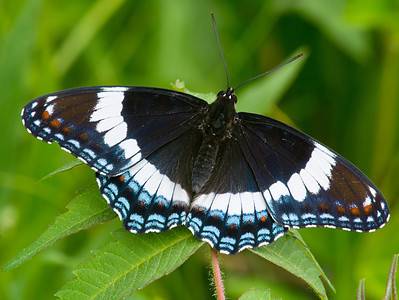
Admiral Butterfly
Stunningly beautiful wings
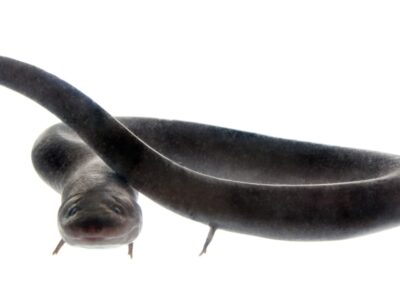
American Eel
Don't eat raw eel! Their blood is poisonous to humans when consumed raw.
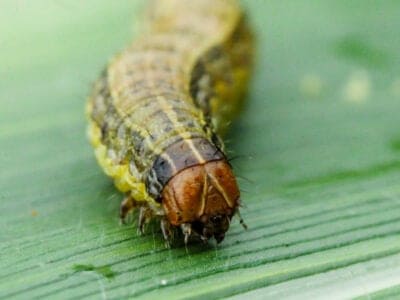
Armyworm
They are so named because they "march" in armies of worms from one crop to another in search of food
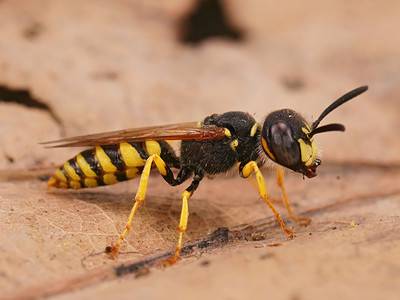
Beewolf wasp
They hunt bees
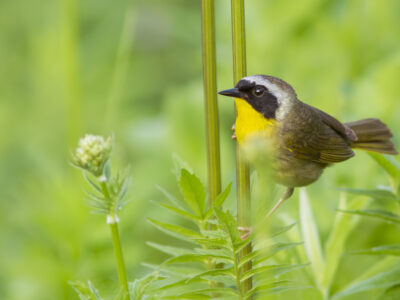
Common Yellowthroat
The Common Yellowthroat stays close to the ground and uses stealth to survive!
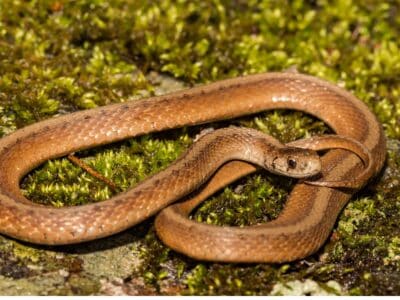
De Kay’s Brown Snake
They have specialized jaws for removing snails from shells.
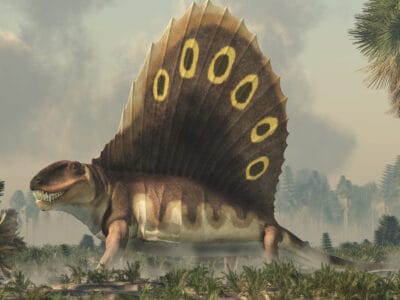
Dimetrodon
Dimetrodon was among the largest predators of the Early Permian Period.

Diplodocus
Their long tales could have been used as a whip!
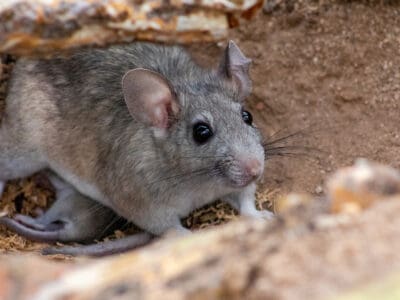
Eastern Woodrat
The eastern woodrat mating ritual involves a potentially deadly fight between the male and female before reproduction begins!
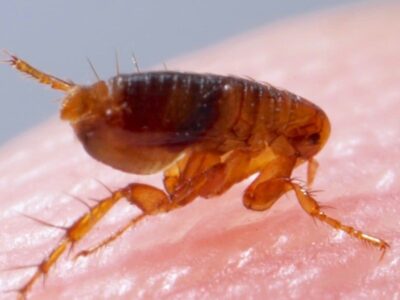
Flea
Adult fleas can jump up to 7 inches in the air
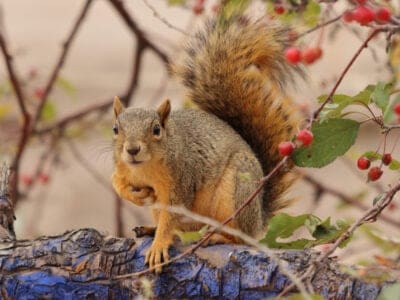
Fox Squirrel
Although it is a tree squirrel, it spends most of its time on the ground.
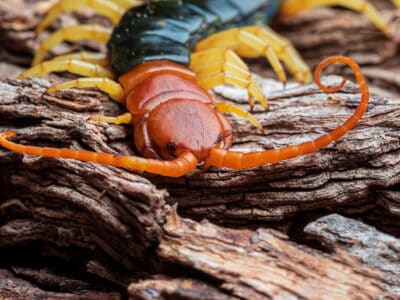
Giant Desert Centipede
They are the largest centipede in North America
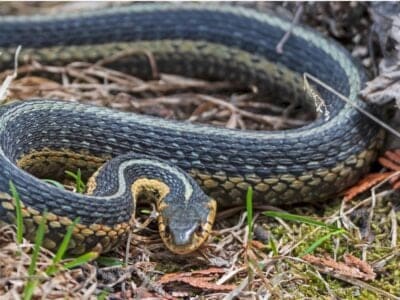
Grass Snake
Use acute hearing to hunt
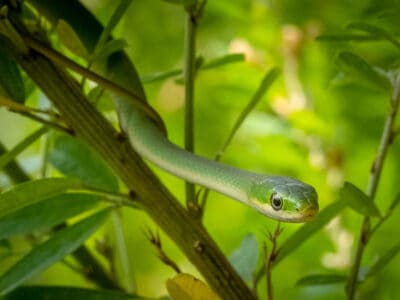
Green Snake
There are two types of green snakes: smooth green snakes and rough green snakes
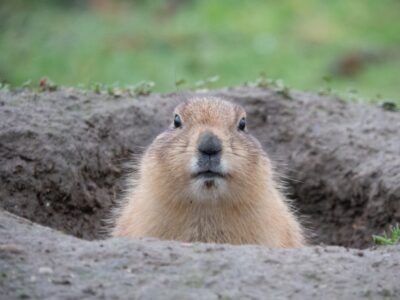
Groundhog (Woodchuck)
They whistle to each other to warn of approaching danger!
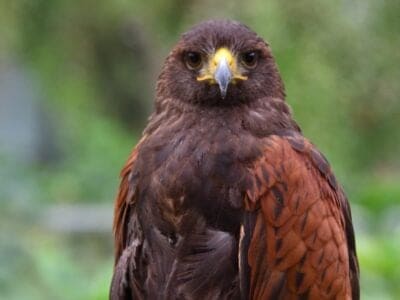
Harris’s Hawk
Their vision is eight times better than a human's
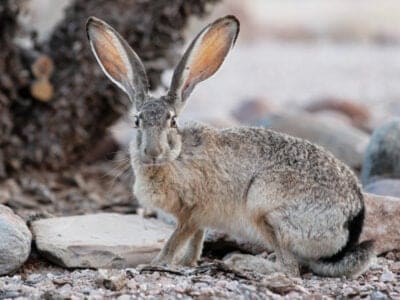
Jackrabbit
They can run as fast as 45 mph.
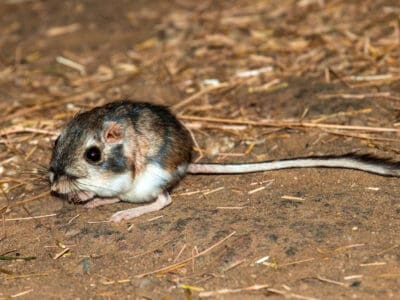
Kangaroo Mouse
The Kangaroo Mouse is a tiny mouse that stands and hops around on its hind legs, much like a kangaroo.
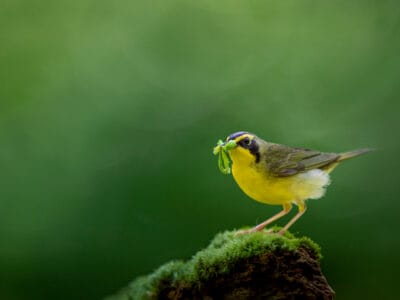
Kentucky Warbler
The Kentucky Warbler appears to wear bright yellow cat-eye glasses!
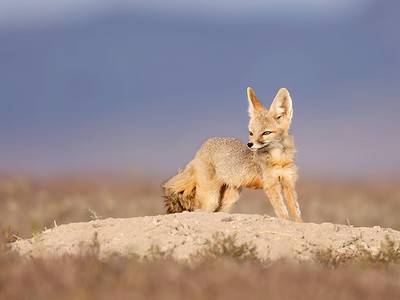
Kit Fox
The kit fox is the smallest canid in North America.
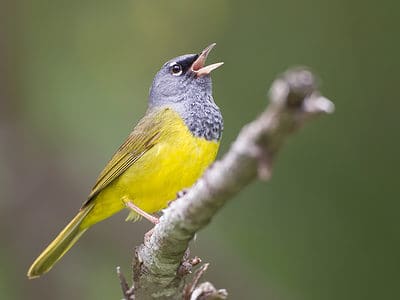
MacGillivray’s Warbler
The complicated story of how MacGillivray’s Warblers got their name involves three ornithologists, a physician and a compromise.
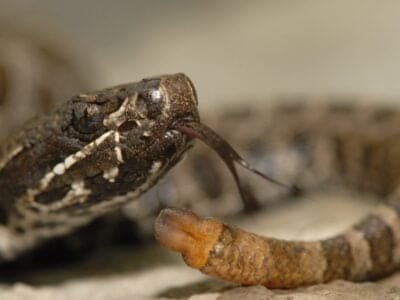
Massasauga
The name “Massasauga” comes from the Chippewa language, meaning “Great River Mouth”.
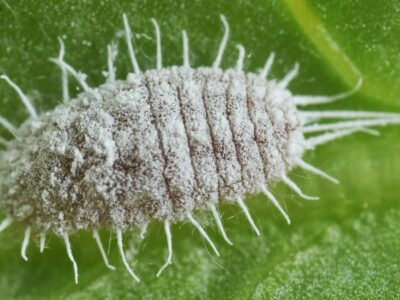
Mealybug
They have a symbiotic relationship with ants.
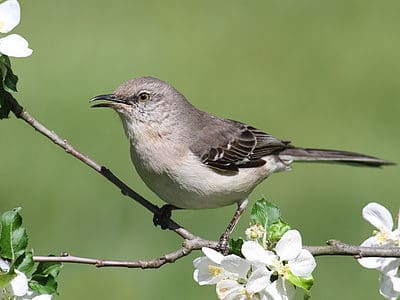
Mockingbird
Mockingbirds are incredible mimics that can learn hundreds of songs!
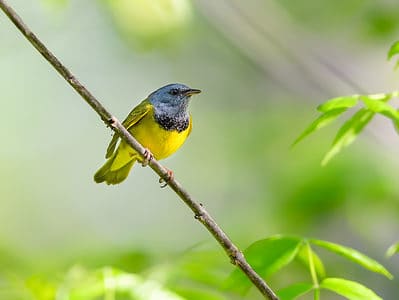
Mourning Warbler
The Mourning Warbler was named for its gray head, which resembles a mourning veil!
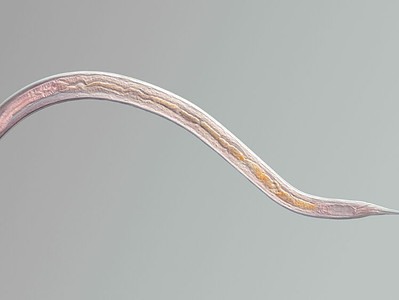
Nematode
Nematodes range in size from 1/10 of an inch to 28 feet long
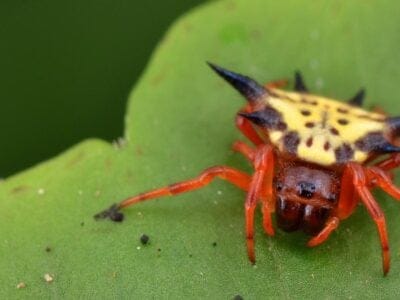
Orb Weaver
Females are about four times the size of males
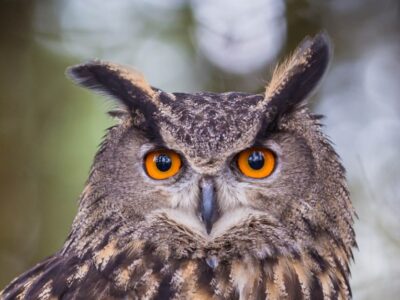
Owl
The owl can rotate its head some 270 degrees
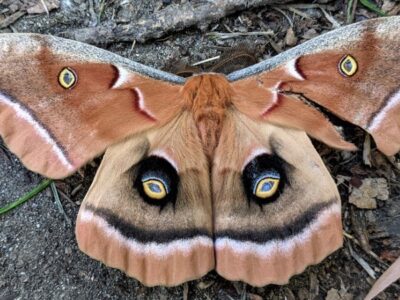
Polyphemus Moth
The Polyphemus moth doesn’t and can't eat, except when it's a caterpillar!
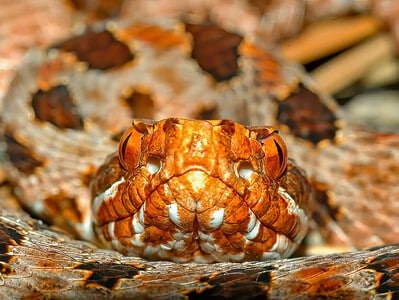
Pygmy Rattlesnake
Pygmy rattlesnakes’ rattle is so small it can only be heard from about three feet away.
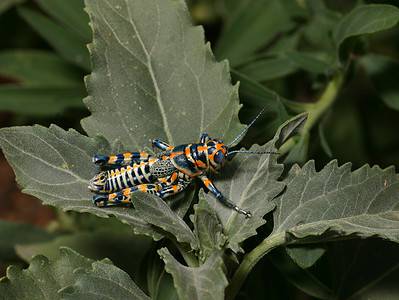
Rainbow Grasshopper (Dactylotum bicolor)
They have strikingly bright colors
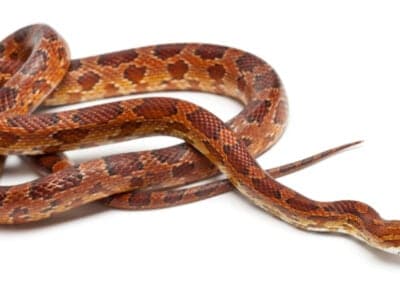
Rat Snakes
Rat snakes are constrictors from the Colubridae family of snakes.
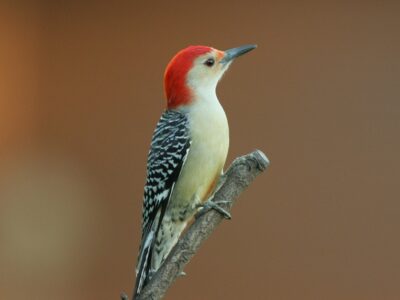
Red-Bellied Woodpecker
Red-Bellied Woodpeckers will often steal the nests of other birds.
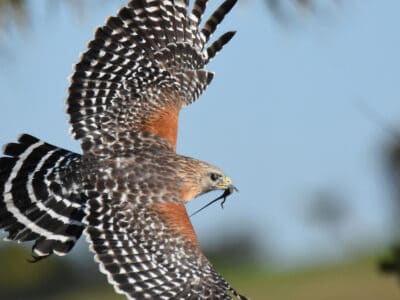
Red-Shouldered Hawk
Red-Shouldered Hawks reuse the same nesting area each year.
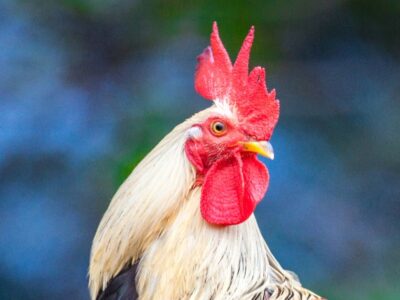
Rooster
Will mate with the entire flock!
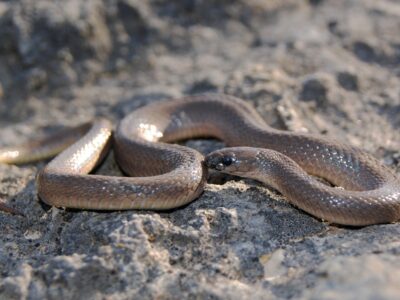
Rough Earth Snake
It has a pointed snout that is uses to burrow into moist soil.
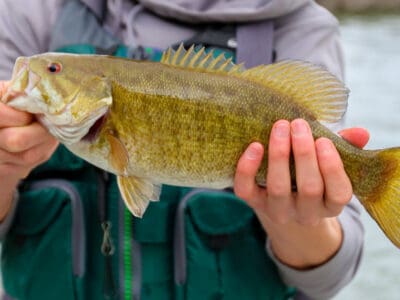
Smallmouth Bass
A fierce fighter!
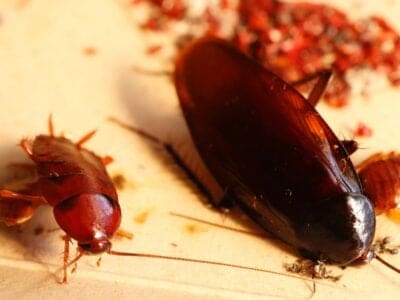
Smokybrown Cockroach
Has up to 45 eggs per egg case
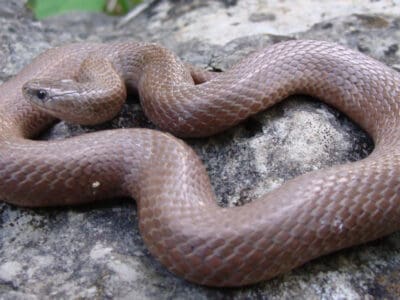
Smooth Earth Snake
Valeria Biddle Blaney (1828-1900) collected the first specimen in Maryland.
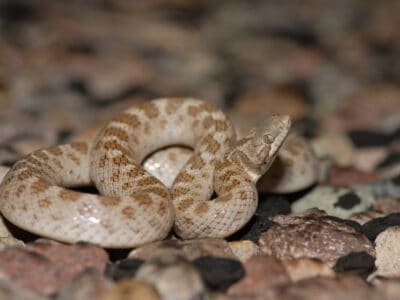
Texas Night Snake
The Texas night snake has vertical pupils to help it see better at night.
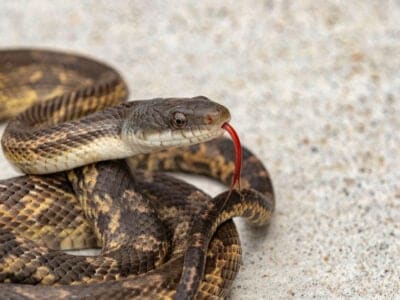
Texas Rat Snake
The Texas rat snake is one of the most common subspecies of the western rat snake in the wild.
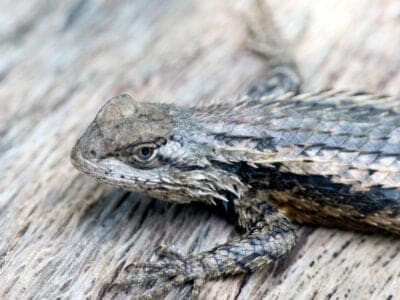
Texas Spiny Lizard
They hold push-up competitions!
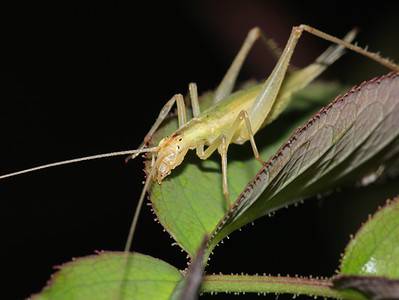
Tree Cricket
They make music with their wings
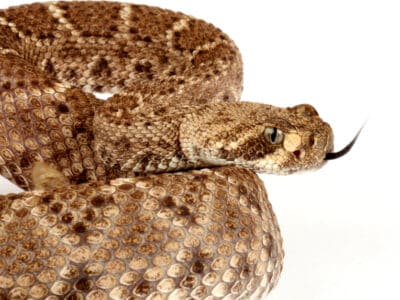
Western Diamondback Rattlesnake
They replace their fangs 2-4 times per year!

Western Rat Snake
Western rat snakes have special scales on their belly that help them climb up trees.

White-Eyed Vireo
During courtship, males put on exciting displays by fluffing their plumage, spreading their tails, and letting out a whining call.
Oklahoman Animals List
- Admiral Butterfly
- Agkistrodon Contortrix
- American Eel
- Armyworm
- Beewolf wasp
- Common Yellowthroat
- De Kay’s Brown Snake
- Dimetrodon
- Diplodocus
- Eastern Woodrat
- Flea
- Fox Squirrel
- Giant Desert Centipede
- Grass Snake
- Green Snake
- Groundhog (Woodchuck)
- Harris’s Hawk
- Jackrabbit
- Kangaroo Mouse
- Kentucky Warbler
- Kit Fox
- MacGillivray’s Warbler
- Massasauga
- Mealybug
- Milk Snake
- Moccasin Snake
- Mockingbird
- Mourning Warbler
- Nematode
- Orb Weaver
- Owl
- Polyphemus Moth
- Pygmy Rattlesnake
- Rainbow Grasshopper (Dactylotum bicolor)
- Rat Snakes
- Red-Bellied Woodpecker
- Red-Shouldered Hawk
- Rooster
- Rough Earth Snake
- Sandhill Crane
- Smallmouth Bass
- Smokybrown Cockroach
- Smooth Earth Snake
- Southeastern Blueberry Bee
- Swallowtail Butterfly
- Texas Night Snake
- Texas Rat Snake
- Texas Spiny Lizard
- Tree Cricket
- Western Diamondback Rattlesnake
- Western Rat Snake
- White-Eyed Vireo
Animals in Oklahoma FAQs (Frequently Asked Questions)
What animals are known in Oklahoma?
Animals that are known in Oklahoma include pronghorn antelope, white-tailed deer, and the American and Plains bison.
Are there any wild animals in Oklahoma?
There are many many wild animals in Oklahoma, too many to list here.
Are there monkeys in Oklahoma?
Monkeys are not native to Oklahoma. The only monkeys in Oklahoma are found in zoos.
What kind of predators live in Oklahoma?
Oklahoma’s predators include several species of birds, including eagles, owls and hawks, coyotes, foxes, and bobcats. Many small animals can also be considered predatory, including insects such as the ambush bug.
Are there garter snakes live in Oklahoma?
There are 5 garter snake species that live in Oklahoma:
- Common Garter Snake (Thamnophis sirtalis)
- Western Terrestrial Garter Snake (Thamnophis elegans)
- Checkered Garter Snake (Thamnophis marcianus)
- Western Ribbon Snake (Thamnophis proximus)
- Plains Garter Snake (Thamnophis radix)









